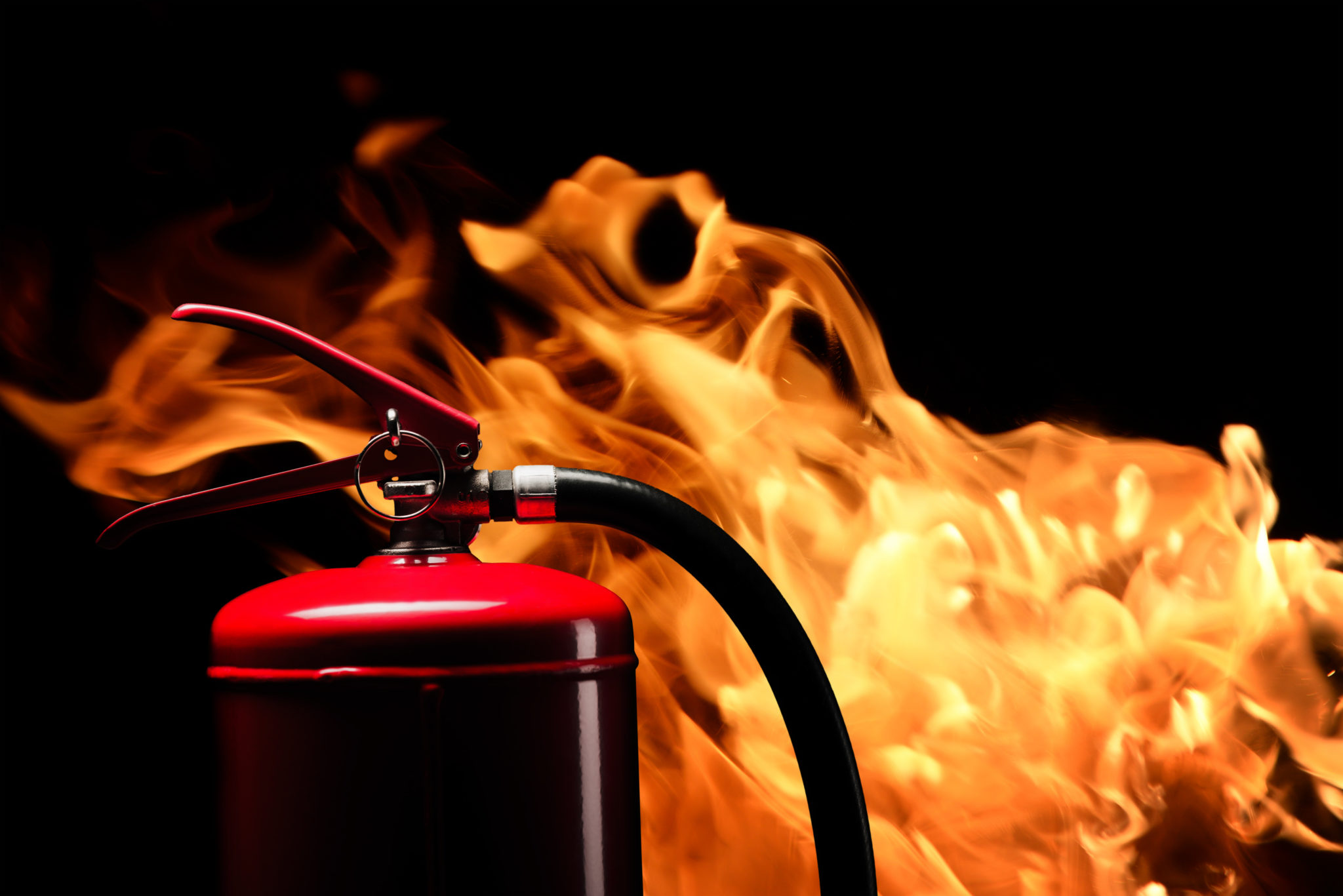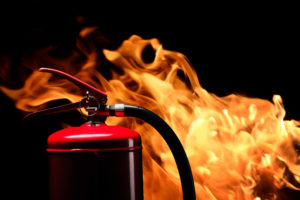
 We’ve discussed different types of fire in a previous blog (classes A, B, C, D and K), each of which a unique fuel type and hazard characteristics, plus an ignition source, oxygen, and an uninhibited chemical chain reaction. So now that we’re familiar with the classifications of fire, let’s go over how to manually tackle each one safely and effectively. All portable fire extinguishers serve the purpose of removing or inhibiting one of those four key elements, but they are certainly not all created equal.
We’ve discussed different types of fire in a previous blog (classes A, B, C, D and K), each of which a unique fuel type and hazard characteristics, plus an ignition source, oxygen, and an uninhibited chemical chain reaction. So now that we’re familiar with the classifications of fire, let’s go over how to manually tackle each one safely and effectively. All portable fire extinguishers serve the purpose of removing or inhibiting one of those four key elements, but they are certainly not all created equal.
Pressurized Water Extinguisher – Use for Class A Fires
Considered one of the most basic tools of fire protection, the pressurized water extinguisher can discharge 2 ½ gallons of water in about one minute, from a distance of up to 30 or 40 feet, by cooling the fuel to a temperature at which it can’t continue to burn or reignite.
Dry Chemical Extinguisher – Use for Class A, B, C Fires
Available in two categories (ordinary and multi-purpose), dry chemical extinguishers interrupt the fire’s chemical reaction by creating a barrier on the fuel.
The multi-purpose (or ABC) dry chemical extinguisher is the most widely used these days, and it’s the one you probably come across all over the place—you know, that tall red canister you see in the office, library, restaurants, etc. It utilizes fluidized and siliconized mono-ammonium phosphate powder and ammonium sulfate.
The ordinary (or BC) dry chemical extinguisher isn’t as ubiquitous as its multi-purpose counterpart. It contains sodium or potassium bicarbonate. Use ONLY for Class B and C fires.
Carbon Dioxide Extinguisher – Use for: Class B, C, D, K Fires
It’s not effective on Class A fires, but a carbon dioxide extinguisher works by decreasing the concentration of oxygen in the immediate vicinity of the flame and by absorbing heat energy from the flame. Keep in mind that it must be used at a close range of 3-8 feet.
Dry Powder Extinguisher – Use for Class D Fires
The method is similar to that of the dry chemical extinguisher in that it coats the fuel with a thin layer of dry chemical powder to create a barrier, but it’s only effective on fires that involve combustible metals.
Wet Chemical Extinguisher – Use for Class K Fires
Developed specifically for cooking fires involving oil or fat, the wet chemical extinguisher is one of the newest options on the market. The active ingredient is potassium acetate, and when activated, it sprays a fine mist that cools the flames and prevents splashing, then creates a foam layer that smothers the fat. You’re less likely to see these around unless you happen to work in a commercial kitchen that uses a hot oil immersion fryer (think French Fries) and commercial stove tops, all of which is covered by a listed or approved exhaust hood.
Clean Agent Extinguisher – Use for Class A, B & C Fires
Clean agent extinguishers contain one of several clean agent chemicals, which were developed to replace ozone-depleting halons previously used in portable extinguishers. Clean agents exit the extinguisher as a liquid and vaporize enroute to the base of the fire, which is why they are referred to as “streaming agents”. Clean agents extinguish the fire primarily by chemical reaction with the fire chemistry. Clean agent extinguishers are available for Class A, B and C fires. They are ideal for use in data centers with sensitive electronics because they leave to residue behind that could be harmful to the electronic equipment.
Foam Extinguisher – Use for Class A and B Fires
Foam extinguishers are best for Class B spill fires, because the foam agent blankets the surface and prevents the flammable liquid vapors from contacting oxygen in the air. The foam extinguishing agent is water-based so the extinguishers are also appropriate for Class A fires, but unsafe for use on Class C fires.
Water Mist Extinguisher- Use for Class A and C Fires
An alternative to clean agent extinguishers where contamination is a concern, water mist extinguishers remove the heat element of the fire tetrahedron, and also cool the burning fuel. They can be safe for Class C, but are intended primarily for Class A fires.
Now What?
Now that we’ve gone over the different types of fire extinguishers, let’s talk about what else you need to know when it comes to choosing and operating one. First, identify the type of fuel present and related characteristics that define the hazard. Next, consider the extinguisher’s rating, which indicates the size of fire the unit is capable of putting out. Typical office buildings call for a minimum of 3-A and 40-B. For more information about the rating system, check out the Occupational Safety and Health Administration’s explanation here.
Once you’ve picked the right one, make sure it’s conspicuously located, readily accessible, along normal paths of travel and protected where subject to physical damage. Location and spacing requirements can be found in NFPA 10, “Portable Fire Extinguishers”, published by the National Fire Protection Association (NFPA).
You should ONLY attempt to put out a fire in the early stages when it is small and contained and ONLY when there is a means of escape behind you that is clear of fire. If the fire has spread beyond the early stages, do not attempt to fight the fire and evacuate the building IMMEDIATELY.
If you have determined that the fire is small and contained enough to use a fire extinguisher, remember to PASS:
- Pull the pin and break away the safety seal
- Aim the hose or nozzle at the base of the fire and stand the appropriate distance away
- Squeeze the handle to discharge the agent
- Sweep the nozzle side to side along the base of the fire while moving toward or around the fire as it diminishes; always remember to keep a clear path to an exit
For more information about how to safely and effectively use a fire extinguisher, consider reaching out to your local fire department. Keep in mind that firefighting should be left to the professionals, in most cases, and we encourage you to receive formal training so that you’re prepared in the case of a fire small enough for you to put out yourself.
Be on the lookout for a future blog on how best to maintain fire extinguishers in reliable working order.

